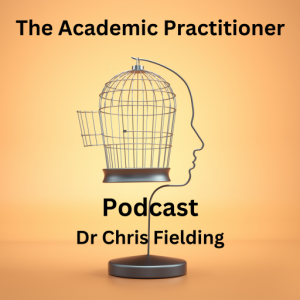This month, I took a closer look at an article by Emma Goodall and colleagues1 which claims that phsyiological body awareness (interoception) in some pupils (particularly autistic pupils and those with ADHD) is undeveloped and that teaching a simple programme to improve that awareness can reduce dysregulated behaviour in those pupils and the exclusion that goes with it.
Goodall et al. (2022) state that ‘at the high school level, interoception activity interventions have a very particular influence on reducing the rates of suspensions for students involved in the interventions’.
As our centre returns for the new academic year, I already have a plan to work with staff and children to develop a consistency of approach around emotional literacy, however Goodall et al. argue that without the associated work on interception running alongside, the children’s ability to self-regulate will be hindered and I may not get the reduction in dysregulated behaviour that I seek.
How interoception can inform reasonable adaptations in the classroom
Goodall was the Manager for Disability and Complex Needs in the Department for Education, South Australia. and the article draws on her prior study 2 where an interoception programme was first piloted and then trialled in 11 schools. It included a set of easy to use, replicable activities3 which can be implemented by school staff. Examples include stretching the hands and being aware of the feeling in the muscles or being aware of the temperature of the hands compared to the temperature of the skin on the arms. Over time, the programme helps children develop an awareness of their body and how it is feeling – a skill that is necessary but underdeveloped in many. The study reported less dysregulated behaviour and fewer suspensions amongst those pupils taking part. This interoception programme is now being rolled out in 225 schools in southern Australia and for those looking to make reasonable adaptations and improve outcomes for such pupils, Goodall et al’s article and associated publications (see references) are simple, practical and well worth a look.
What is interoception and how is linked to behaviour?
Alongside emotional intelligence and meta-cognition, interoception is a key component in the ability to self-regulate and is described as ‘ the processes by which an organism senses, interprets, integrates and regulates signals from within itself’ or more simply as a ‘physiological awareness of the body’. Goodall et al. (2022) draw a distinction between self-management (‘ongoing, dynamic, and adaptive behaviours which are made in response to internal states relating to biological homeostasis needs within the body’) and self-regulation (‘the individual’s ability to control his or her behaviour towards goals and helpfully express socio-emotional needs and wants’) where issues with self-regulation may emerge out of deeper self-management needs. The authors draw a link between the ability of a child the recognise the emotion they are feeling (a component of interoception) and their ability to regulate their response. They go on to highlight the higher rates of exclusion amongst autistic pupils and those with Attention Deficit Hyperactivity Disorder (ADHD) and those with Oppositional Defiant Disorder and Conduct Disorder. They suggest a link with interoception and hypothesise that developing interoception in highly dysregulated pupils improves self-regulation and reduce rates of suspension and exclusion.
How a structured interoception programme may affect pupil behaviour and rates of exclusion?
Goodall’s trial programme (2021) took place across 11 primary and secondary schools where each school implemented a structured approach to developing interoception. In secondary schools, the programme was embedded in year 8 and 9 with the most dysregulated pupils having access to interoception classrooms. The study found a significant decrease in challenging behaviour in the first 8-10 weeks and pro-social behaviour increasing after 16-20 weeks. This study also found a corresponding reduction in the rates of suspension and exclusion.
What implications does this have for practice?
Developing interoception is more than simply developing a pupil’s emotional literacy but also helping them recognise the deeper physiological changes in the body that may be eliciting those emotions. I recall working with a young autistic child presenting with extremely dysregulated behaviour at a time when he had toothache but no awareness of the physiological cause of his distress and therefore no way to communicate his need in an appropriate way. The programme materials (see references) are there to be used (Goodall and Brownlow’s book4 has also recently been published). It would be interesting to run the programme in the same way as those in the study for a group of pupils presenting with dysregulated behaviour. It would also be interesting to add some of the tasks to our whole class settling activities at the start of lessons.
Further reading
The South Australia Department for Education has a very useful advice and resource page for those looking to implement an interoception programme in schools.
References
- Goodall, E., Brownlow, C., Fein, E. and Candeloro, S. (2022) Creating Inclusive Classrooms for Highly Dysregulated Students: What Can We Learn from Existing Literature? Education Sciences 12 (8)
- Goodall, E. (2021) Facilitating interoceptive awareness as a self-management and self-regulation tool to increase engagement in learning and education.[Thesis (PhD/Research)].
- Government of South Australia (2019) Ready to learn – Interoception Kit.
- Goodall, E.; Brownlow, C. (2022) Interoception and Regulation. Teaching Skills of Body Awareness and Supporting Connection with Others. Jessica Kingsley Press: London, UK, 2022.

